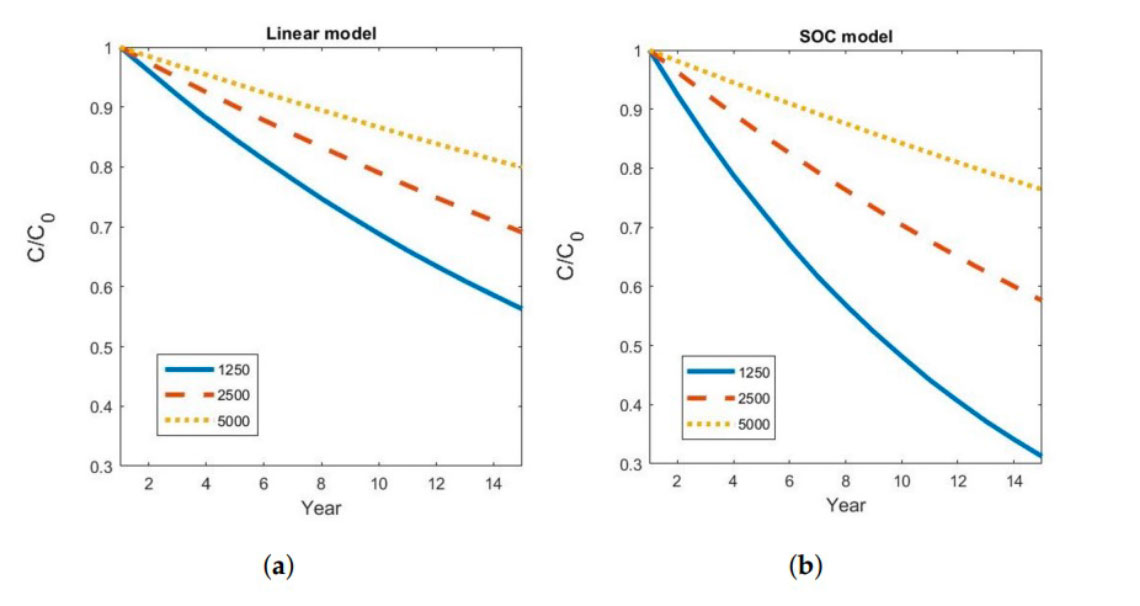Italian National Agency for New Technologies, Energy and Sustainable Economic Development

Energy: ENEA estimates aging of batteries in electric cars charging points
A team of ENEA researchers, jointly with the University of Cassino, has calculated the aging of lithium-ion battery storage systems in electric cars charging stations and the consequent impact on construction and management costs of a road charging column equipped with a photovoltaic system. The results, published in the open access journal Energies, are based on data collected for one year in eleven public charging stations installed in the Barcelona metropolitan area, as part of the European project USER-CHI[1] on future mobility.
“We compared the impact on operating and investment costs using two simple models for the aging of a battery pack,” explained Natascia Andrenacci at the ENEA Laboratory of Systems and Technologies for Sustainable Mobility. A model takes into account just the amount of energy exchanged by the battery and the other also the depth of discharge[2]. The two approaches, implemented in the resource management system of the charging station, show different results. “On the one hand – continued Andrenacci – the first model allows for a better use of the energy generated by the photovoltaic system, with a relative economic advantage. On the other hand, this leads to faster battery degradation, clearly a disadvantage.”
For instance, if a battery has a life span of 2,500 complete cycles, considering the depth of discharge in the aging model, the storage system reaches 60% of its initial capacity after 14 years. Conversely, if we consider the cost of the degradation of the storage system proportionally to the energy exchanged, the battery does not reach its end-of-life condition for the entire 15-year investment horizon. This means that in the first case it is necessary to purchase a second pack of batteries, thus nullifying the profit obtainable from a greater use of renewable energy.
"We demonstrate how calculation models for battery aging can affect real energy flows assessment, with direct consequences both on use and duration of the storage system of the charging infrastructure. The choice of model depends on several factors, including battery cost: if it’s high, the more conservative model is more suitable. Conversely, if purchase prices drop (due to incentives, for instance), then an intense use of the battery is advisable and therefore a more 'vigorous' operational management model can be used", pointed out the ENEA researcher.
Indeed, the increasingly widespread use of electric vehicles requires proper planning of the charging infrastructure. In addition to identifying the optimal position, an accurate sizing of energy needs and power flow management is necessary. In particular, if we consider the presence of a renewable energy source and a storage system, it is increasingly important to identify strategies to maximize the use of renewable energy and, therefore, of the storage system, reducing purchase costs from the electricity grid to a minimum.
According to the International Energy Agency[3], in 2030 global electricity demand from electric vehicles will reach 1,100 TWh (terawatt hours), about 4% of total electricity demand and about twice total consumption of electricity in Brazil. With technological advances in the electrification of transportation means, the share of electric vehicles is growing significantly. Globally, electric car sales in 2021 accounted for almost 10% of the total (four times the market share in 2019), achieving around 16.5 millions (triple from 2018). Global sales continued their strong growth in 2022 as well, with 2 million new electric cars sold in the first quarter, a 75% growth compared to the same period in 2021.
Notes
[1] Innovative solutions for USER centric CHarging Infrastructure.
[2] In more detail, in the second approach (State of Charge) the state of charge of the battery is limited by the fact that, nearing the extreme operating limits (0% and 100%), the cost of usage increases. Also In the linear model, the available charge is not used fully, but the operating limits are set by the user at 10% and 90%. Therefore, the 'State of Charge' model enables to make more use of the storage system in its daily use, while the other is more "conservative", when the usage limits are set in the range of 10-90% of the state of charge, so extending the system lifecycle.

